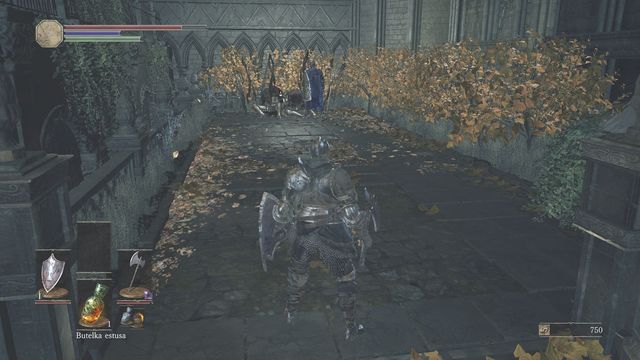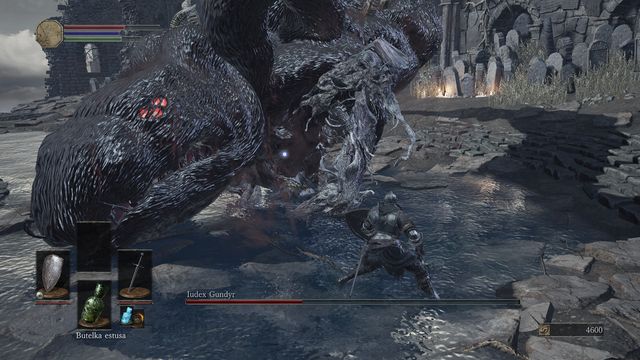Dark Souls 3: Combat

Combat is the inseparable part of Dark Souls III. Wherever and whenever you enter a location, you will always stumble upon enemies. They are characterized by different styles of combat, equipment, durability, or speed. This is why the most basic skill you have to master is to be able to adapt your combat style to specific enemies. You will fight differently against a boss, and differently when dealing with a group of smaller, but dangerously swift, enemies.
A weapon and a shield - the best combination to begin with. Attacks coming from weaker enemies can be fully blocked with a shield, which will allow you to avoid taking damage and perform counterattacks. Additionally, you can hide behind a shield in order to protect yourself from fire of enemy archers and crossbowmen. However, you must be careful, as more powerful attacks can break through your block. Finally, pay attention to your energy - you require it to block attacks.
Two-Handed weapons - there is a number of dedicated two-handed weapons in the game, and some one-handed weapon can also be wielded with two hands. This combat style tends to leave you open, as you aren't using a shield, which is why you must perfect the ability to dodge if you want to use is. Two-handed weapons deal more damage than one-handed ones, and some of the more powerful attacks can't be blocked by a shield. This is why you should try to fight more powerful enemies, as well as bosses, using this style to deal the highest possible damage.
Ranged attacks - you should use them whenever the enemy gains some distance. They deal less damage than an attack with a melee weapon, but every hit counts. Additionally, spells and some of the items can cause negative effects, which weaken the enemy in one way or another.
Special attacks - most weapons are capable of delivering special attacks, which are unique to a specific piece of gear you are using. They can cause, for instance, a short stun, which will cause the enemy to lower his shield. Additionally, remember about the moves available to each of your weapons: backward thrusts, attacks from the top, kicks, attacks performed during sprinting or rolling. You should master at least some of them and connect them with basic strikes (light and heavy) for smooth and deadly combos.
Boss fights

Boss fights are very different from normal encounters. First of all, in most cases bosses will use several different attacks, which you must counter in a specific way. Additionally, you will have trouble blocking some of their strikes, and, given their immense sizes, some of them can be outright impossible to block. Remember that most of the bosses will change their combat style during the fight, which means that you must adapt as well. Finally, every boss has weak points, and discovering them can make the whole encounter a lot easier - it might be a vulnerability to a specific effect (such as fire), or a specific body part that is more susceptible to damage. If you have difficulties defeating a boss, try to change your approach and use a different tactic.
- Dark Souls III Game Guide & Walkthrough
- Dark Souls 3 in 10 Easy Steps
- Dark Souls 3: Introduction
- Dark Souls 3: Character creation
- Dark Souls 3: Tips for beginners
- Dark Souls 3: Firelink Shrine
- Dark Souls 3: Death and leveling up
- Dark Souls 3: Restoring health
- Dark Souls 3: Covenants
- Dark Souls 3: Equipment and upgrades
- Dark Souls 3: Bonfires and shortcuts
- Dark Souls 3: Combat
- Dark Souls 3: General tips
- Dark Souls 3: Appendix - First location and boss
- Dark Souls 3 in 10 Easy Steps
You are not permitted to copy any image, text or info from this page. This site is not associated with and/or endorsed by the developers and the publishers. All logos and images are copyrighted by their respective owners.
Copyright © 2000 - 2025 Webedia Polska SA for gamepressure.com, unofficial game guides, walkthroughs, secrets, game tips, maps & strategies for top games.
